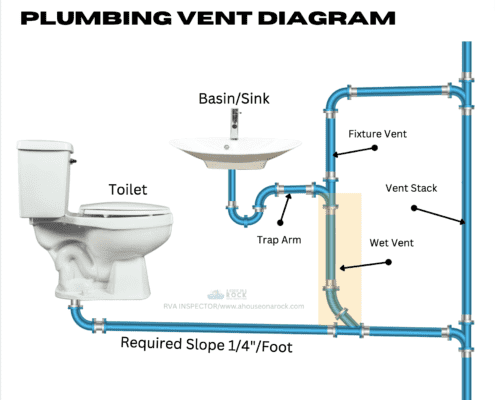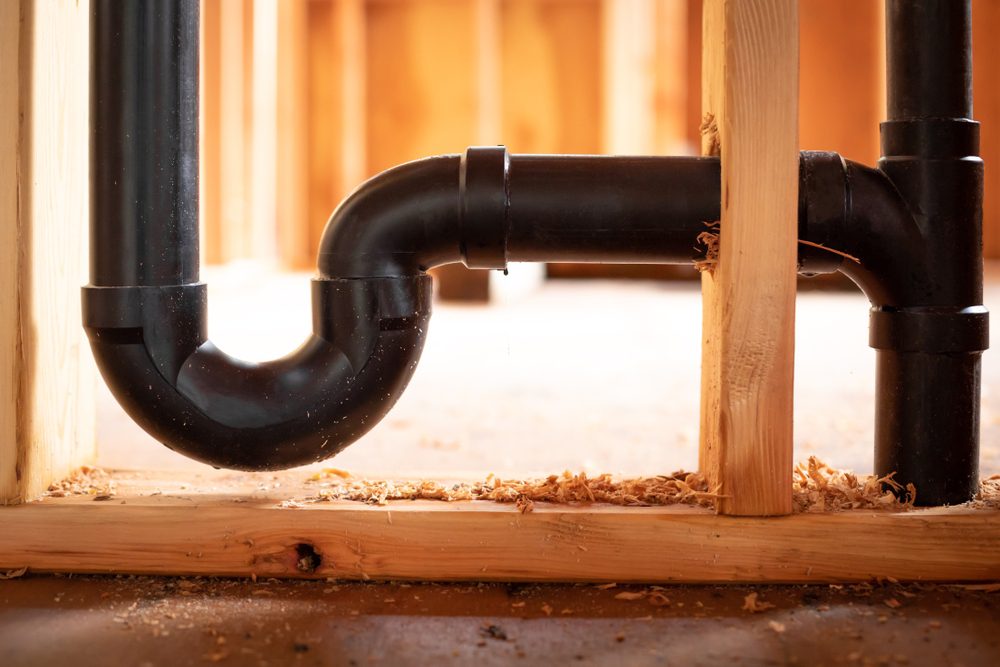The Importance of Correct Ventilation in Home Plumbing Systems
The Importance of Correct Ventilation in Home Plumbing Systems
Blog Article
We have noticed this article involving Essential Plumbing Vent Pipes: Understanding Their Role directly below on the web and decided it made good sense to share it with you on this page.

Proper air flow in plumbing systems is commonly neglected, yet it is critical for preserving the functionality and safety and security of your home's plumbing. Air flow aids regulate air pressure, prevent the accumulation of harmful gases, and guarantee the reliable elimination of waste. In this overview, we will discover the relevance of proper plumbing air flow, just how it functions, and the benefits it offers your pipes system.
Understanding Air Flow in Plumbing
Air flow in pipes describes the network of pipes that permit air to flow via the drainage system. These vents serve multiple purposes, consisting of managing air pressure within the pipes, protecting against drain gases from going into the home, and helping in the smooth circulation of wastewater.
Exactly How Air Flow Works in Plumbing Solutions
Air Pressure Law
Appropriate ventilation keeps well balanced atmospheric pressure within the plumbing system. When water flows via pipes, it displaces air. Without ample ventilation, this variation can develop unfavorable stress, causing reduce drains or siphoning of water from catches, which can trigger unpleasant odors to leak right into the home.
Avoiding Drain Gas Buildup
Among one of the most crucial functions of plumbing vents is to avoid drain gases, such as methane and hydrogen sulfide, from collecting within the home. These gases can posture serious health risks and are highly flammable. Vent pipelines enable these gases to leave safely outside.
Assisting in Waste Removal
Air flow aids in the effective removal of wastewater by avoiding airlocks in the water drainage system. When air can move easily through the vents, it permits water and waste to move smoothly via the pipes, minimizing the risk of obstructions and back-ups.
Kinds Of Plumbing Vents
Main Heap Vent
The primary pile vent, also referred to as the vent pile, is the primary vent in a pipes system. It extends from the primary drain line up via the roof, permitting gases to get away and fresh air to enter the system.
Branch Vent
Branch vents link to the primary pile vent and serve specific fixtures, such as sinks, commodes, and showers. These vents guarantee that each component has ample ventilation to operate appropriately.
Air Admission Valve (AAV).
An Air Admittance Valve (AAV) is a one-way valve that enables air to get in the pipes system without the demand for a traditional vent pipe extending through the roof. AAVs are typically utilized in restorations or locations where setting up a common vent is unwise.
Signs of Poor Ventilation in Plumbing.
Slow Draining Fixtures.
If your sinks, bathtubs, or bathrooms are draining gradually, it could be a sign of inadequate air flow. Inadequate air circulation can produce a vacuum cleaner effect, making it difficult for water to drain pipes effectively.
Gurgling Appears.
Gurgling noises coming from drains pipes are commonly a result of air being drawn through water traps as a result of adverse stress in the pipelines. This is a clear indicator of not enough air flow.
Unpleasant Odors.
Drain odors inside your home are a warning that your pipes system is not effectively aerated. This can mean that drain gases are not being effectively vented outside, leading to potentially dangerous conditions.
Typical Ventilation Errors.
Inadequate Vent Sizing.
Using undersized air vent pipelines can bring about inadequate air flow and pressure imbalances in the system. It's essential to use vents that satisfy the certain demands of your plumbing system.
Improper Vent Positioning.
Positioning vents as well far from the fixtures they offer can lower their performance. Proper positioning guarantees that air can flow easily and efficiently with the system.
Disregarding Code Demands.
Building ordinance provide certain standards for plumbing air flow. Neglecting these codes can lead to a system that falls short to work correctly and might lead to expensive repairs or health hazards.
Advantages of Proper Ventilation.
Boosted System Efficiency.
Correctly aerated plumbing systems operate much more successfully, with less obstructions, faster draining pipes, and much less pressure on the pipelines. This efficiency prolongs the lifespan of the pipes system.
Improved Air High Quality.
By stopping drain gases from entering your home, appropriate air flow contributes to better interior air high quality, making your living atmosphere healthier and much more comfortable.
Stopping Water Damage.
Appropriate ventilation helps avoid water from being siphoned out of traps, which can cause sewer gases entering the home and creating water damage over time.
Steps to Ensure Appropriate Ventilation.
Consulting Pipes Codes.
Constantly seek advice from regional pipes codes when creating or modifying your pipes system. These codes provide the required standards for proper venting and guarantee your system meets security criteria.
Normal Examination and Maintenance.
Normal assessments can help recognize possible air flow issues before they end up being significant problems. Upkeep jobs, such as cleansing vent pipes and looking for obstructions, are vital for keeping the system in good working order.
Specialist Installment.
For brand-new setups or major adjustments, it's smart to hire a professional plumbing. They have the competence to guarantee the ventilation system is correctly made and set up according to code.
Conclusion.
Appropriate air flow is a crucial part of any pipes system, guaranteeing that it works efficiently and safely. By comprehending the relevance of ventilation, acknowledging the indicators of bad air flow, and taking actions to keep your system, you can prevent costly concerns and protect your home's air high quality.
Understanding the Role of Your Plumbing Vents in the Drainage System
The plumbing system in your home is more than just the kitchen sink, toilet, and bathroom. Some problems that arise within home plumbing are hard to detect because homeowners may not understand potential causes.
One part of the plumbing system that could cause you endless problems is the venting. The drain lines that run through your home and drain wastewater need proper venting to function properly. Faulty plumbing vents can lead to several problems that require the expertise of a plumber to check them out. Before finding experienced plumbing services, there are a few things to learn about plumbing vents.
Why vents are vital
Vents in the plumbing system lead to an outside area such as the roof or the back. The function of these vents is to keep sewer gases away from the drain pipes. They also establish seals in the drainage pipes that prevent the sucking back of waste gases into the home. Venting in the plumbing system also allows oxygen to get into the drainage system, which is an essential component in the breakdown of waste matter. The vents also ensure that the air pressure within the drainage system remains balanced, facilitating the flow of wastewater.
Possible problems
When the plumbing vents are problematic, one of the consequences is imbalanced water levels in the toilet. If you notice that the levels in the toilet bowl rise and fall all the time, then there may be something wrong with the vents.
Another issue is air bubble formation within the toilet. In most cases like these, the drain pipes are not receiving enough air. Lack of air pressure equalization is what leads to water flow problems. If you come across such issues in your home, make sure you call professional plumbers, such as the ones from Perfection Plumbing & Drain Cleaning Ltd.
Potential causes
Several scenarios can lead to some of the plumbing problems that homeowners suffer because of venting. One such scenario is the use of incorrectly sized vents. Usually, vents are the same size as the drain line to facilitate proper venting. Vents that are too small will lead to some plumbing issues. Another potential cause is fixtures that are not close enough to the vents. In this scenario, air forces itself through the traps of other fixtures, leading to gurgling sounds from toilets and sinks.
Most of these problems also happen with clogged vents. Tree leaves and debris can cause clogging when they make their way down a vent. Unclogging plumbing vents is a service that you can entrust to Saskatoon plumbers. They will know how to snake down vents and remove clogging stuck in fixtures.

We had been made aware of that editorial on What Is a Plumbing Vent and Why Is It Important through a pal on a different web address. Liked our entry? Please share it. Let another person find it. I enjoy reading our article about Why Plumbing Air Vents Are Important.
Free Estimates Report this page